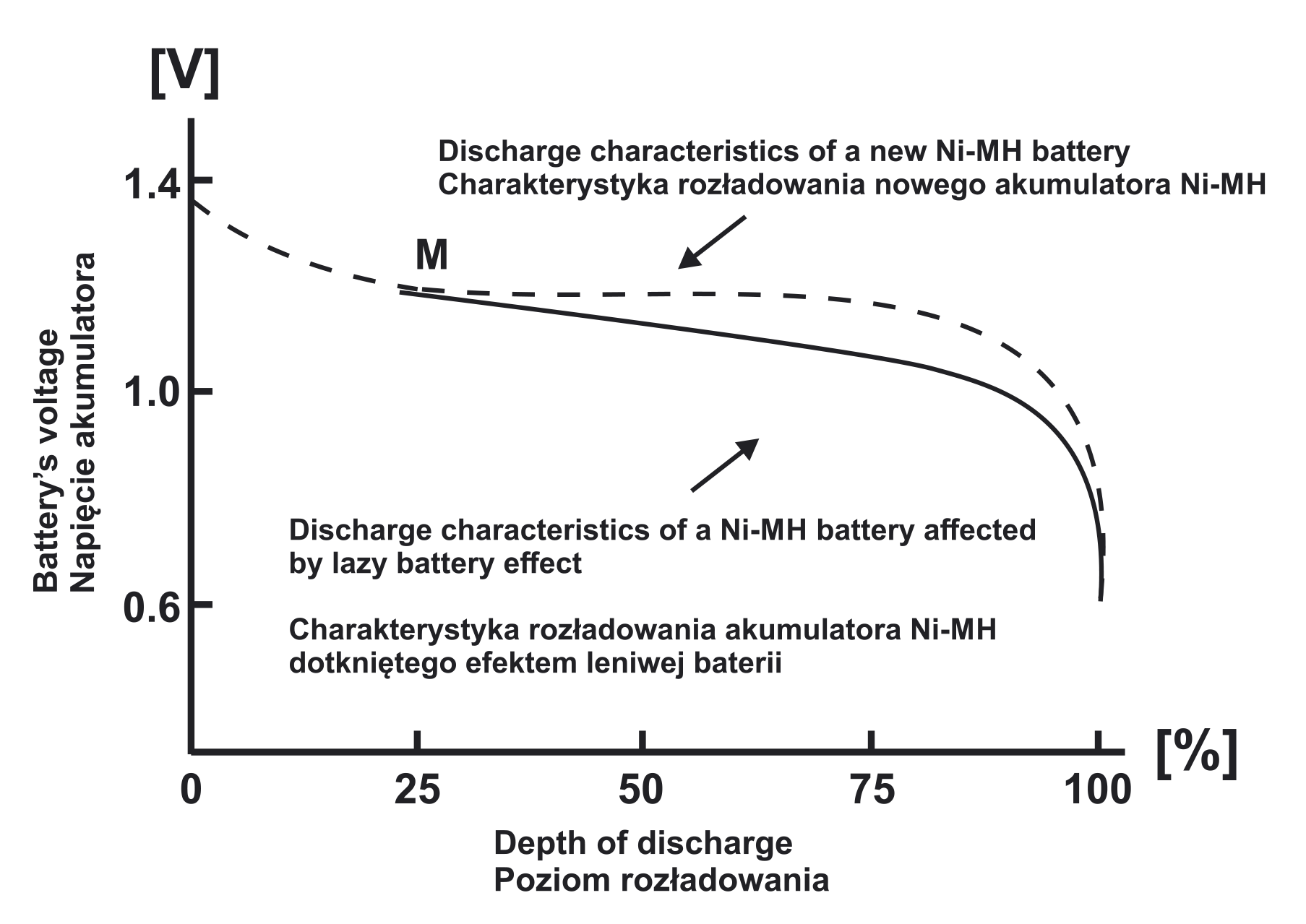- Tips
- technology
- Frequently Asked Questions
- Tests
- mAh capacity
- Rated Capacity
- comparison
- everActive
- Batteries vs rechargeable batteries
- Durability of rechargeable batteries
- Efficiency of rechargeable batteries
- battery voltage
- Accumulated energy
- LR03 AAA
- LR6 AA
- eneloop
- AG13 LR1154 LR44
- CR 2032
- Delta V
- Charge Cycles
- internal resistance
- charge level
- memory effect
- accredited test
- SR44 357
- Hearing Batteries 675
- SR626 377
- Watch Batteries
- Polarity
- Mah
- passivation
- LS 14250
- LS 14500
What is the memory effect and does it apply to Ni-MH batteries?
The memory effect is characteristic of older Ni-Cd batteries. The effect of this unwanted phenomenon was a reduction in the usable capacity of the battery.
The battery, when discharged, only partially "remembered" the moment of charging. During later use, it became increasingly difficult to use the capacity and energy remaining in the battery.
Ni-MH rechargeable batteries are not directly affected by the memory effect, but in their case you can encounter a similar phenomenon called the lazy battery effect.
Ni-Cd nickel-cadmium batteries and memory effect.
An example of a Ni-Cd cell discharged regularly only in 25% "remembered" the moment (marked 'M' in the diagram below) when the battery was disconnected and recharged. During later use, the battery remembered the moment when it was disconnected and already being discharged in only 25% it showed signs of an empty cell (there was a clear voltage drop). In practice, it was difficult to use the 75% of the capacity still remaining in the battery.
 Fig.1 Discharge characteristics of a Ni-Cd battery.
Fig.1 Discharge characteristics of a Ni-Cd battery.
A preventive method for this unwanted phenomenon was additional, forced discharge of such a battery to the voltage level of 0.9V, sometimes even lower. Many users recommended such discharge before each battery charge.
Nickel-metal hydride batteries and lazy battery effect.
Ni-MH batteries are not as prone to memory effects. In their case, we sometimes talk about the lazy battery effect, which consists in an apparent increase in the internal resistance of the battery and a decrease in its efficiency. However, the nature of this change is much milder and is not as permanent as in the case of Ni-Cd batteries.
 Fig.2 Discharge characteristics of a Ni-MH battery.
Fig.2 Discharge characteristics of a Ni-MH battery.
A battery affected by the lazy battery effect still remains usable in most applications. In addition, this effect is not permanent and even in the case of a very "lazy" cell, this phenomenon can be effectively removed by discharging the battery to a voltage level of approx. 0.9V-1.0V.
Unlike Ni-Cd cells, Ni-MH batteries are not recommended to be additionally discharged before each charge - I have discussed this topic in more detail in another post.
Author: Michał Seredziński
Copying the content of the text or its part without the consent of a representative of Baltrade sp. z o.o. is prohibited.